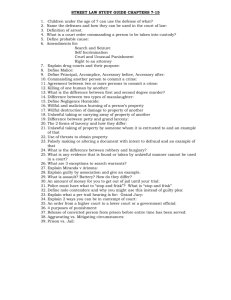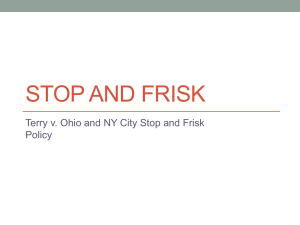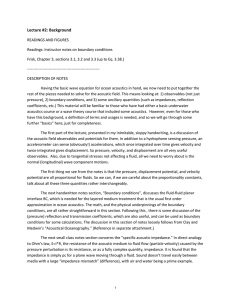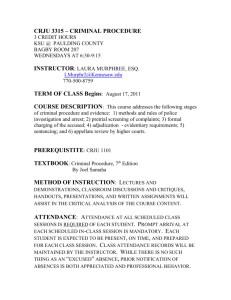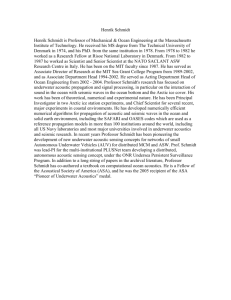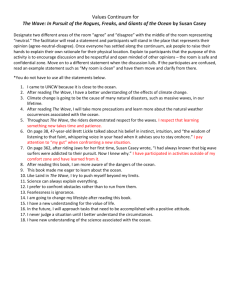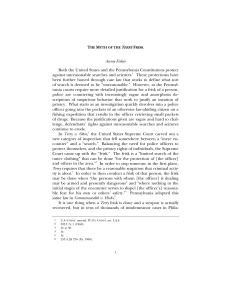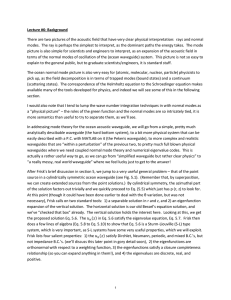Lecture #3: Background
advertisement
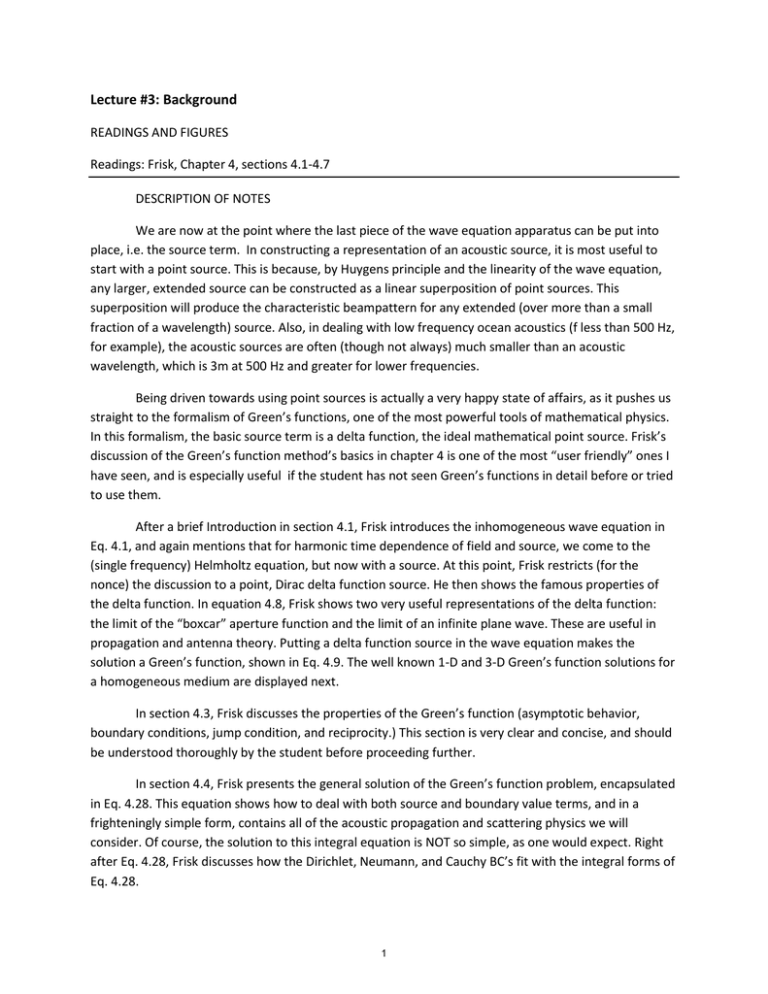
Lecture #3: Background READINGS AND FIGURES Readings: Frisk, Chapter 4, sections 4.1-4.7 DESCRIPTION OF NOTES We are now at the point where the last piece of the wave equation apparatus can be put into place, i.e. the source term. In constructing a representation of an acoustic source, it is most useful to start with a point source. This is because, by Huygens principle and the linearity of the wave equation, any larger, extended source can be constructed as a linear superposition of point sources. This superposition will produce the characteristic beampattern for any extended (over more than a small fraction of a wavelength) source. Also, in dealing with low frequency ocean acoustics (f less than 500 Hz, for example), the acoustic sources are often (though not always) much smaller than an acoustic wavelength, which is 3m at 500 Hz and greater for lower frequencies. Being driven towards using point sources is actually a very happy state of affairs, as it pushes us straight to the formalism of Green’s functions, one of the most powerful tools of mathematical physics. In this formalism, the basic source term is a delta function, the ideal mathematical point source. Frisk’s discussion of the Green’s function method’s basics in chapter 4 is one of the most “user friendly” ones I have seen, and is especially useful if the student has not seen Green’s functions in detail before or tried to use them. After a brief Introduction in section 4.1, Frisk introduces the inhomogeneous wave equation in Eq. 4.1, and again mentions that for harmonic time dependence of field and source, we come to the (single frequency) Helmholtz equation, but now with a source. At this point, Frisk restricts (for the nonce) the discussion to a point, Dirac delta function source. He then shows the famous properties of the delta function. In equation 4.8, Frisk shows two very useful representations of the delta function: the limit of the “boxcar” aperture function and the limit of an infinite plane wave. These are useful in propagation and antenna theory. Putting a delta function source in the wave equation makes the solution a Green’s function, shown in Eq. 4.9. The well known 1-D and 3-D Green’s function solutions for a homogeneous medium are displayed next. In section 4.3, Frisk discusses the properties of the Green’s function (asymptotic behavior, boundary conditions, jump condition, and reciprocity.) This section is very clear and concise, and should be understood thoroughly by the student before proceeding further. In section 4.4, Frisk presents the general solution of the Green’s function problem, encapsulated in Eq. 4.28. This equation shows how to deal with both source and boundary value terms, and in a frighteningly simple form, contains all of the acoustic propagation and scattering physics we will consider. Of course, the solution to this integral equation is NOT so simple, as one would expect. Right after Eq. 4.28, Frisk discusses how the Dirichlet, Neumann, and Cauchy BC’s fit with the integral forms of Eq. 4.28. 1 Section 4.5 is an indication of the “user friendliness” mentioned before – in it, Frisk outlines the very practical considerations one faces and methods one needs to use in employing Green’s functions. This is an instructor speaking to a student in very clear terms. Section 4.6 represents, in a very concrete sense, a point of arrival in the lectures. Finally, we will see a detailed solution to the wave equation that is of practical importance to ocean acoustics. In discussing Green’s function methods, the method of images is always used as a common, basic example. In the case of ocean acoustics, using this method for the case of a point source near an infinite planar surface is exactly what we encounter in putting a source just below the sea surface or just above the seabed. So we get both pedagogy and practicality from this example! In section 4.6.1, Frisk shows the Dirichlet BC example, where one specifies the pressure on the boundary (e.g. p=0 for the sea surface!). In section 4.6.2, he does the same for the Neumann BC (e.g. our “hard” ocean bottom BC!). These two examples show the detailed structure of the Green’s function, as well as its properties (as discussed in a previous section). In practical terms, the Dirichlet BC example corresponds exactly to the seismic profiling experimental configuration, for oil and gas exploration. The Neumann BC case corresponds closely to the physical situation where ocean acousticians often place or tow acoustic sources near the seabed (to minimize spreading loss) when trying to determine seabed geoacoustic properties. In section 4.6.4, the planar Dirichlet BC example is considered in detail. This example is generally called the “Lloyd’s Mirror” example in acoustics and optics, and again, is especially relevant to ocean and seabed acoustics in the context of seismic profiling. Using the “effective dipole” set up by the image charge above the sea surface, Frisk shows how the Lloyd’s mirror leads to a situation where the dipole beams the acoustic energy preferentially downward, with a correspondingly quicker falloff horizontally. This is ideal for seismic airgun arrays, which cannot be deployed deep, and also want to beam most of their energy into the bottom and not horizontally. This is a standard example in ocean acoustics books, but Frisk’s treatment is more complete than what one would find in most other books. Section 4.6.5, while not covered by this course, is useful to read, in that it covers the important case of an ocean waveguide. One sees a multiplicity of image sources, corresponding to the ray theory multipaths we will discuss later. (The Green’s function solution here is more pedagogical than practical – other methods show more of the multipath physics.) Section 4.7 is another important section, in that it discusses the very important “endpoint method” for creating the Green’s function. This is the “cookbook” method most often described in textbooks, where one synthesizes the inhomogenous solution from linear combinations of the homogeneous solutions that satisfy the BC’s. This is a perhaps the most “general” of the methods discussed. Past section 4.7, Frisk goes into what he describes as “spectral methods”, e.g. the wavenumber integration or “Hankel transform” methods. We will look at these at a later stage of the course. 2 MIT OpenCourseWare http://ocw.mit.edu 2.682 Acoustical Oceanography Spring 2012 For information about citing these materials or our Terms of Use, visit: http://ocw.mit.edu/terms.
